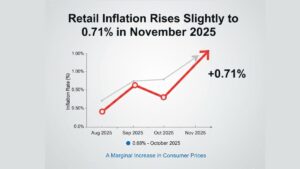India’s fiscal deficit for FY24 improved to 5.6% of GDP, better than the previous estimate of 5.8%, due to higher revenue realization and lower expenditure. In actual terms, the fiscal deficit was ₹16.53 lakh crore, or 5.63% of the GDP, which grew by 8.2% in 2023-24.
Revenue and Expenditure Details
The fiscal deficit stood at ₹16.54 trillion in FY24, against the budgetary target of ₹17.86 trillion. Net tax receipts for FY24 were above projections at ₹23.27 trillion. Total expenditure was ₹44.43 trillion, 99% of the budgeted amount.
Fiscal Targets and Expectations
The Centre has set an FY25 fiscal deficit target of 5.1%, or ₹16.85 trillion, aiming to achieve a fiscal deficit of 4.5% of GDP by FY26. Economists expect favourable fiscal dynamics in FY25 due to strong tax receipts and a large dividend payout by the Reserve Bank of India (RBI).
RBI Dividend Impact
The RBI board approved the transfer of ₹2.11 trillion ($25.35 billion) as surplus to the Union government for FY24. The Interim Budget for FY25 had budgeted for a ₹1.02 trillion dividend from the central bank, state-run banks, and other financial institutions.
Efficiency in Tax Collection
Total expenditure increased from ₹41.9 trillion to ₹44.4 trillion, an uptick of about 6%, while the fiscal deficit lowered by about 5%. This improvement is attributed to the efficiency of the Central Board of Direct Taxes and Central Board of Indirect Taxes & Customs, and the use of artificial intelligence to unearth fake transactions. Direct tax collections grew by 17.7% year-on-year to ₹19.58 trillion in FY24, exceeding the Revised Estimates by ₹13,000 crore and Budget Estimates by ₹1.35 trillion. GST collections for FY24 increased by 11.7% to ₹20.14 trillion.




 India’s Forex Reserves Rise by $1.68 Bil...
India’s Forex Reserves Rise by $1.68 Bil...
 India’s Net Direct Tax Collections Rise ...
India’s Net Direct Tax Collections Rise ...
 Retail Inflation Rises Slightly to 0.71%...
Retail Inflation Rises Slightly to 0.71%...







